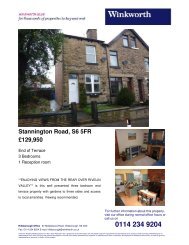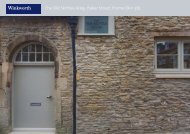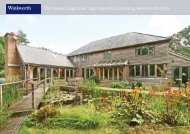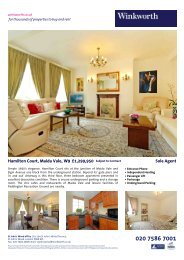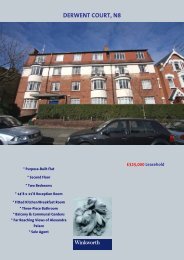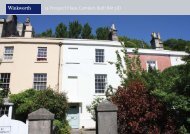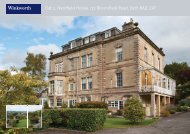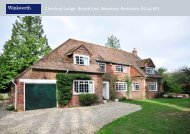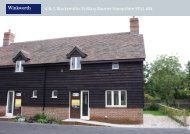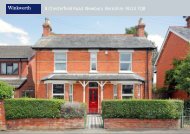Home Information Pack
Home Information Pack
Home Information Pack
Create successful ePaper yourself
Turn your PDF publications into a flip-book with our unique Google optimized e-Paper software.
Residential<br />
CON29DW Drainage & Water Search<br />
For your guidance:<br />
• The boundary of the property has been determined by reference to the<br />
plan supplied. Where a plan was not supplied the Ordnance Survey<br />
Record was used.<br />
• “Low water pressure” means water pressure below the regulatory<br />
reference level, which is the minimum pressure when demand on the<br />
system is not abnormal.<br />
• Water Companies are required to include in the Regulatory Register<br />
that is presented annually to the Director General of Water Services,<br />
properties receiving pressure below the reference level, provided that<br />
allowable exclusions do not apply (i.e. events which can cause<br />
pressure to temporarily fall below the reference level)<br />
• The reference level of service is a flow of 9 litres/minute at a pressure<br />
of 10metres / head on the customer's side of the main stop tap (mst).<br />
The reference level of service must be applied on the customer's side<br />
of a meter or any other company fittings that are on the customer's side<br />
of the main stop tap. The reference level applies to a single property.<br />
Where more than one property is served by a common service pipe, the<br />
flow assumed in the reference level must be appropriately increased to<br />
take account of the total number of properties served. For two<br />
properties, a flow of 18 litres/minute at a pressure of 10metres/head on<br />
the customers' side of the mst is appropriate. For three or more<br />
properties the appropriate flow should be calculated from the standard<br />
loadings provided in BS6700 or the Institute of Plumbing handbook.<br />
• Allowable exclusions The Company is required to include in the<br />
Regulatory Register properties receiving pressure below the reference<br />
level, provided that allowable exclusions listed below do not apply.<br />
• Abnormal demand: This exclusion is intended to cover abnormal<br />
peaks in demand and not the daily, weekly or monthly peaks in<br />
demand, which are normally expected. Companies should exclude from<br />
the reported DG2 figures properties which are affected by low pressure<br />
only on those days with the highest peak demands. During the report<br />
year companies may exclude, for each property, up to five days of low<br />
pressure caused by peak demand.<br />
• Planned maintenance: Companies should not report under DG2 (Low<br />
Pressure Register) low pressures caused by planned maintenance. It is<br />
not intended that companies identify the number of properties affected<br />
in each instance. However, companies must maintain sufficiently<br />
accurate records to verify that low-pressure incidents that are excluded<br />
from DG2 because of planned maintenance are actually caused by<br />
maintenance.<br />
• One-off incidents: This exclusion covers a number of causes of low<br />
pressure; mains bursts; failures of company equipment (such as<br />
pressure reducing valves or booster pumps); firefighting; and action by<br />
a third party. However, if problems of this type affect a property<br />
frequently, they cannot be classed as one-off events and further<br />
investigation will be required before they can be excluded.<br />
Thames Water Utilities Ltd<br />
Property Insight<br />
PO Box 3189<br />
Slough SL1 4WW<br />
DX 151280 Slough 13<br />
T 0118 925 1504<br />
F 0118 923 6655/57<br />
E searches@thameswater.co.uk<br />
I www.twpropertyinsight.co.uk<br />
Registered in England and Wales<br />
No. 2366661, Registered office<br />
Clearwater Court, Vastern Road<br />
Reading RG1 8DB<br />
Searches<br />
Page 13 of 22



